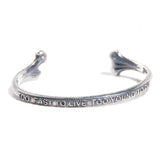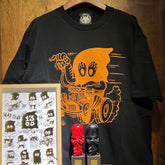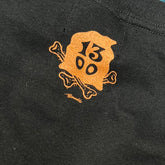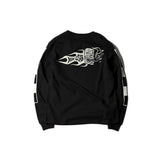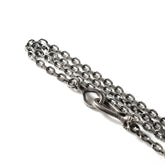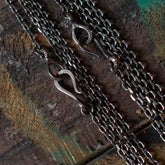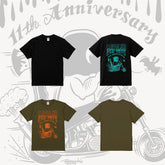Indian NAVAJO representative jewelry NAJA/SQUASH BLOSSOM NECKLACE crescent & pomegranate flower necklace

The most representative jewelry of American Indians - NAJA & SQUASH BLOSSOM NECKLACE. I think many people should know it in recent years, and may have read many articles. However, because it is unofficial history, the opinions are somewhat different. Here we use our Share what you know with everyone!
Since NAJA and SQUASH BLOSSOM were not linked together from the beginning, we will introduce them separately. Let’s talk about NAJA first!


There are many ways to say NAJA, but the correct one is called "Crescent Moon"!
Let’s start from the beginning. Everyone should know that the Spanish have ruled the Indian colonies since the 16th century. The inverted crescent moon was originally hung on the head of a horse by the Moors in the Middle Ages to ward off evil spirits and pray for a safe journey. , returned successfully, spread to the Spaniards and then to the Indians. For the NAVAJO people, the correct word for this decoration should be "NAZHAHI", which represents the crescent moon. Later, the colloquial form became NAJA, and then the word rattlesnake came into being. In short, it symbolizes luck.

Because the various Indian tribes learned silvermaking at different times, and the language was not convenient at that time, it is also said by word of mouth that the shape of the horse's hoof symbolizes luck. There are many different theories and practices about the origin and derivation of this. Similarly, it is also said that the shape of the uterus and the embrace of hands all symbolize protection. Although these are all formal interpretations or developed later, of course the meanings are good, but we still prefer to call NAJA "Crescent Moon" .



If you have any questions, why should you rely on NAVAJO’s statement? Let’s first get to know Atsidi Sani, a member of the NAVAJO tribe. Around 1850, he wanted to make horse bridles by himself (at that time, the Indians purchased them from Mexicans through trade), so he learned metal processing from his Mexican friend Nakai Tsosi. method, and became a highly prestigious blacksmith in the tribe.
After hard work for a while, around 1865, Atsidi Sani mastered the method of melting silver coins and processing them into silver jewelry ( Coin Silver ), and taught it to his sons and tribesmen. Naturally, he became the first silversmith in India, and was respected as the "old smith". " and "daddy of silversmith". Later, the Zuni and Hopi tribes gradually inherited the silvermaking technology from the Navajo tribe and developed different styles.

It can be seen that the NAJA worn by Atsidi Sani, a silversmith, pharmacist and chief in the picture around 1870, was simply matched with silver beads. Around 1880, tourism became popular and the raw materials were sourced. Many Indian silver jewelry changes also increase,
SQUASH BLOSSOM appeared together with NAJA necklaces, and CONCHO BELT. These two can be said to be the bulk of transactions with white people, and they are also a symbol of status.

The prosperity of Indian silver jewelry has also indirectly liberated the souls of Indians who have been oppressed for centuries, allowing NATIVE AMERICAN with its unique culture and charm to be valued by the world. Therefore, SQUASH BLOSSOM NECKLACE and CONCHO BELT have become Indians. A representative jewelry, especially a must-have for every silversmith!



Let’s go back and talk about SQUASH BLOSSOM. I almost forgot that I only talked about the origin of NAJA...
SQUASH BLOSSOM The correct word for NAVAJO people is CHIL BITAN, which is flower-shaped beads. They were first made in the shape of pomegranate flowers POMEGRANATE BLOSSOM seen by the Spanish in the 19th century, so it can be seen that the early CHIL BITAN bloomed shorter , and because Indians use pumpkin as their staple food, they later developed a longer-shaped CHIL BITAN, which is also SQUASH BLOSSOM pumpkin flower, but to be more precise, it is still called "pomegranate flower"!
For NAVAJO people, it symbolizes hope and harvest, coupled with the luck that NAJA symbolizes, this is the origin of the combination of "Crescent Moon" and "Pomegranate Flower" ~




For the Indians, SQUASH BLOSSOM NECKLACE has a very important position. It has subsequently developed different shapes, such as crosses, coins, or whole strings of crescents. More beautiful stones are also used, especially for the Indians. Turquoise stone, which is very important to people, has the symbolic meaning of NAVAJO people!
Extended reading: Reproduction of representative works of Indian national crafts - COIN SQUASH by CHOOKE
